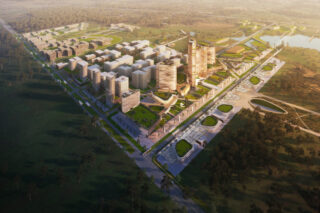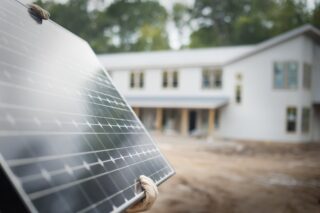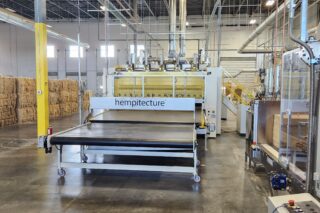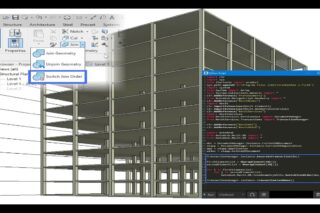Among the plethora of innovative awards at Batimat, Benoit Beach Villa and the regional offices of Auvergne structures were awarded the Mondial du Bâtiment’s Smart Home and Building Grand Prix. The prize is dedicated to technologically conscious companies who exemplify innovation with respect to building design, application and maintenance. The vacation home and the city building received recognition for their excellence in centralized control systems and sustainable practices.
Underground Heat Exchanger
In line with intelligence, the automated regional council offices of Auvergne received the “Smart Building” award due to its exemplary low-energy consumption. The building design was conceived by the architect Bruno Mader. Notably certified HEQ (high environmental quality), the building is equipped with photovoltaic panels that reduce energy costs by converting light into electricity, along with earth tubes that ventilate and convert the building’s air through an underground heat exchanger.
The design was praised for the double-skin glass façade that allows natural light to shine onto planted atriums as well as verdure aloft the green roofs that use a rain harvesting system. The offices were rendered “smart” by the digital automation company Dom6. The centralized, intelligent digital management system simplifies access to all technologies, such as automatic lighting and heating. Motorized blinds hide cables, gadgets and electronic material when not in use.
Navigation System for Safety
Just as smart, the Benoit Beach Villa was graced with the “Smart Home” award based on impressive innovations in rehabilitation and maneuvers in digital adaptation. Antoine Gimbert, architect and interior designer of François Bureau Hugues d’Achon and associates was initially confronted with a big challenge for this project: obtaining a building permit to reconstruct in a historic and patrimonial neighborhood.
In order to proceed, the architect had to prove the extension would not affect any historical aspects of the house. Conforming to law, a non-identical add-on to the existent structure was built. Pleasing the Franco-American owners and jury alike, the construction successfully echoes the original style of the house.
Embracing brilliance, the enterprise Barbé EDI installed the household digitization system. Discrete systems avoid incongruous technologies through aesthetic choices such as acoustic fabrics and screens that double as mirrors when not is use. The streamlined ergonomics render the villa intuitive and logical. As a safety feature, a navigation system of the house via a computer or a smartphone allows the homeowners to check in from anywhere.











